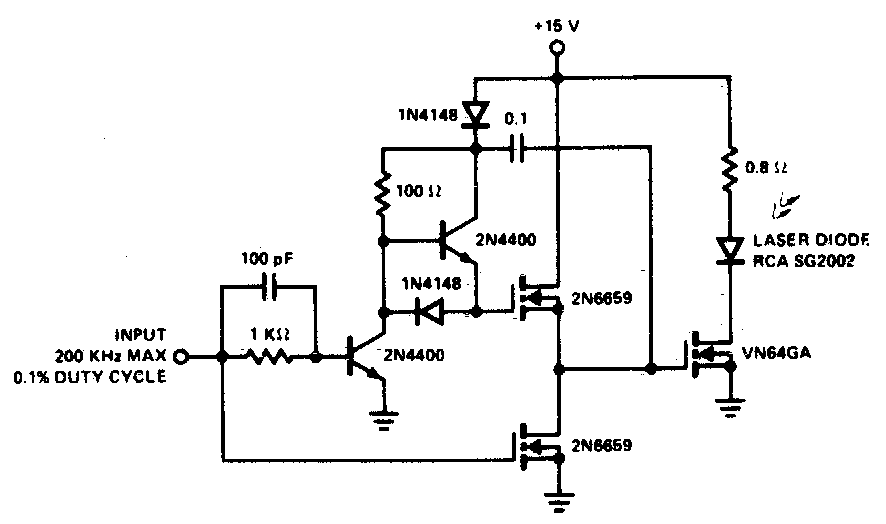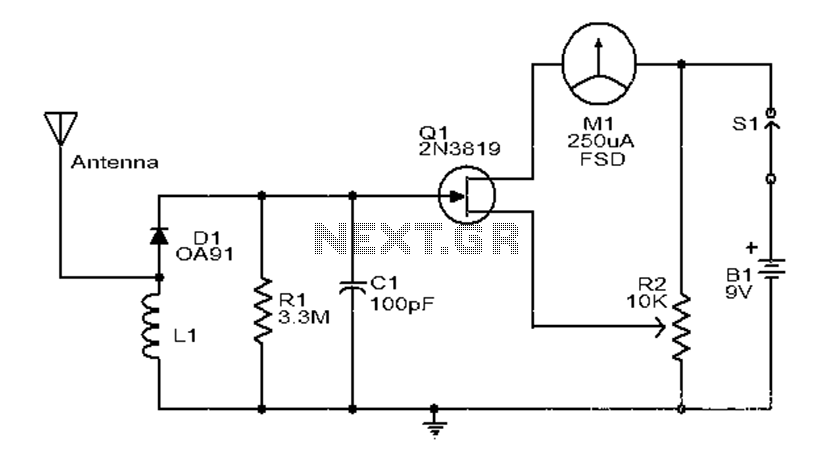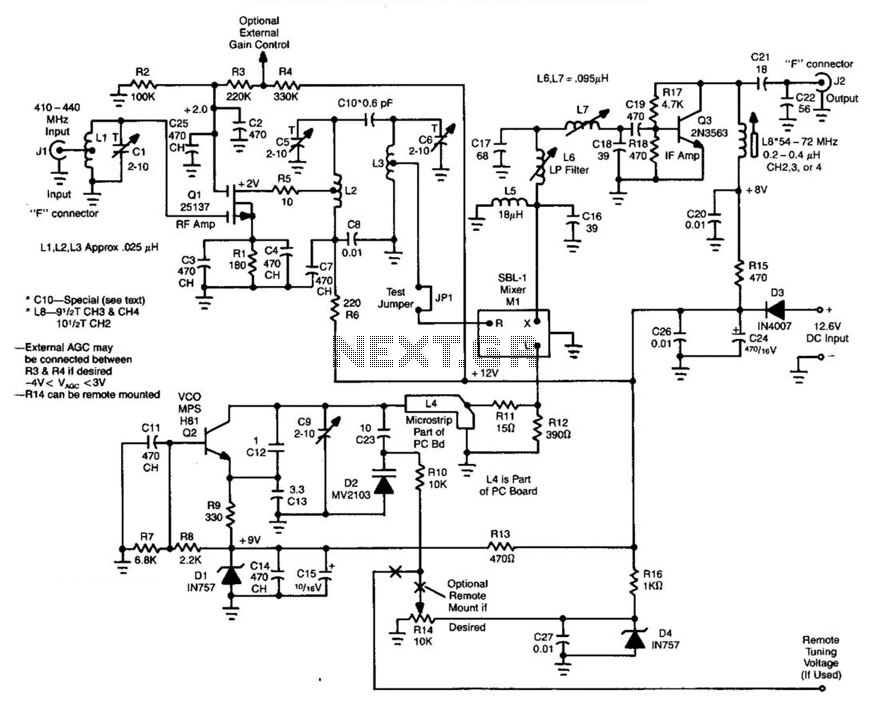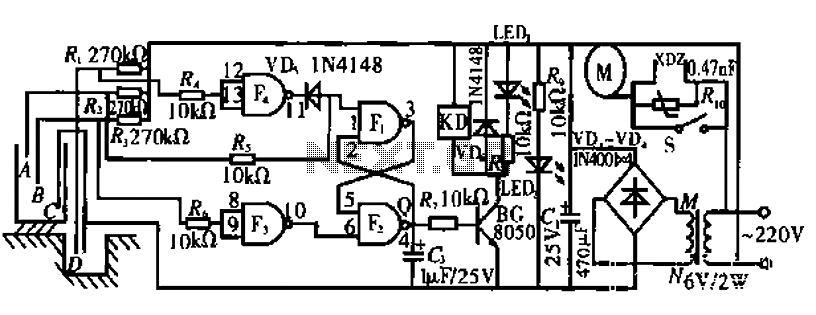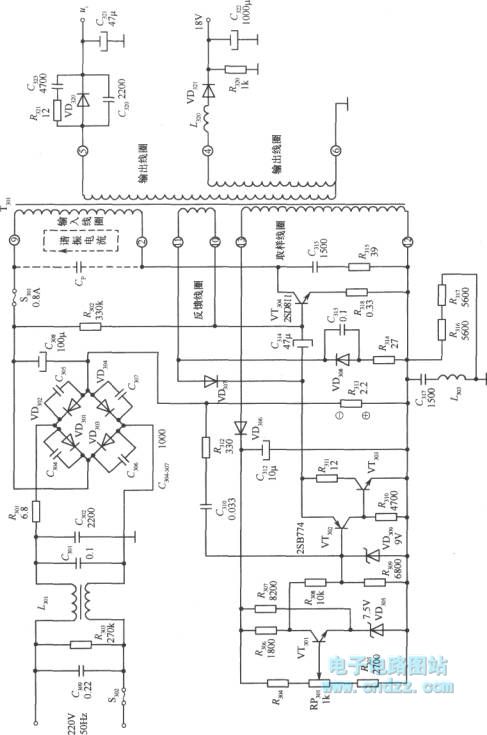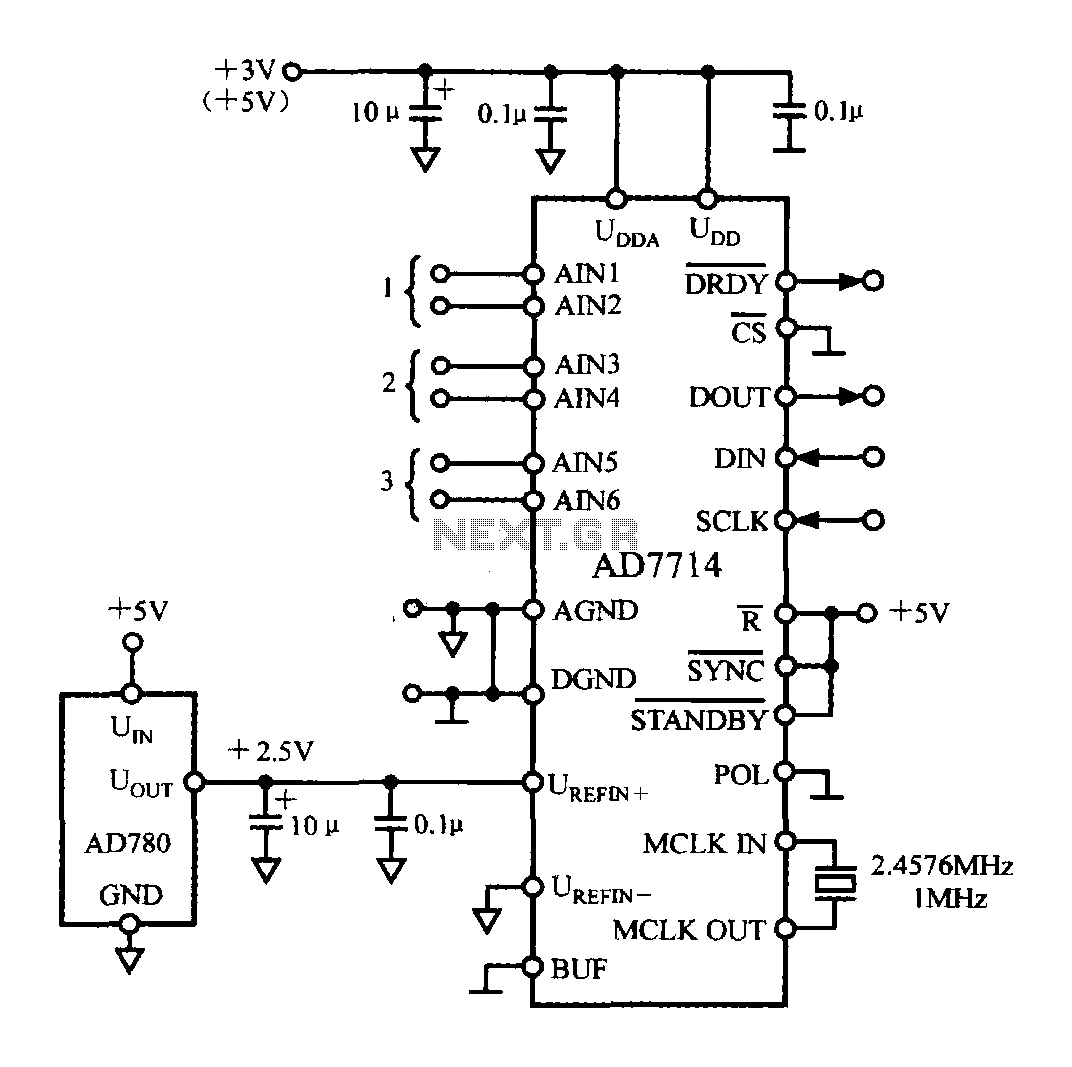
High impedance low capacitance wideband buffer
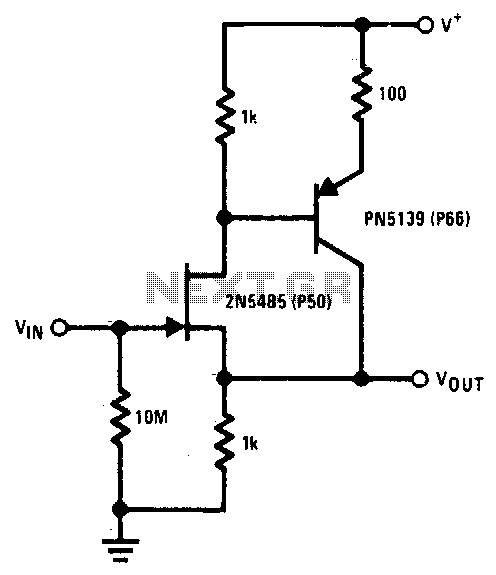
The 2N5485 features low input capacitance, making this compound series-feedback buffer a wide-band unity gain amplifier.
The 2N5485 is a field-effect transistor (FET) that is often utilized in applications requiring low noise and high input impedance. Its low input capacitance is a significant advantage, allowing for high-frequency operation without significant signal degradation. This characteristic makes the 2N5485 particularly suitable for use as a buffer in analog circuits where signal integrity is paramount.
In a typical application, the 2N5485 can be configured as a unity gain amplifier, where it effectively transfers the input signal to the output with minimal distortion and gain of one. The device operates by controlling the flow of current through its channel in response to an applied voltage at the gate terminal. The series-feedback configuration enhances the stability and linearity of the amplifier, enabling it to maintain a consistent output over a wide range of frequencies.
For implementation, the 2N5485 can be connected in a circuit with resistors and capacitors to tailor its frequency response and improve performance. The use of bypass capacitors can further reduce noise and improve transient response. When designing a circuit with the 2N5485, careful consideration should be given to the source and load impedance to ensure optimal performance and to minimize any potential signal loss.
Overall, the 2N5485 is a versatile component that is well-suited for high-frequency applications, providing reliable performance in various electronic devices.The 2N5485 has low input capacitance which makes this compound series-feedback buffer a wide-band unity gain amplifier. 🔗 External reference
The 2N5485 is a field-effect transistor (FET) that is often utilized in applications requiring low noise and high input impedance. Its low input capacitance is a significant advantage, allowing for high-frequency operation without significant signal degradation. This characteristic makes the 2N5485 particularly suitable for use as a buffer in analog circuits where signal integrity is paramount.
In a typical application, the 2N5485 can be configured as a unity gain amplifier, where it effectively transfers the input signal to the output with minimal distortion and gain of one. The device operates by controlling the flow of current through its channel in response to an applied voltage at the gate terminal. The series-feedback configuration enhances the stability and linearity of the amplifier, enabling it to maintain a consistent output over a wide range of frequencies.
For implementation, the 2N5485 can be connected in a circuit with resistors and capacitors to tailor its frequency response and improve performance. The use of bypass capacitors can further reduce noise and improve transient response. When designing a circuit with the 2N5485, careful consideration should be given to the source and load impedance to ensure optimal performance and to minimize any potential signal loss.
Overall, the 2N5485 is a versatile component that is well-suited for high-frequency applications, providing reliable performance in various electronic devices.The 2N5485 has low input capacitance which makes this compound series-feedback buffer a wide-band unity gain amplifier. 🔗 External reference
